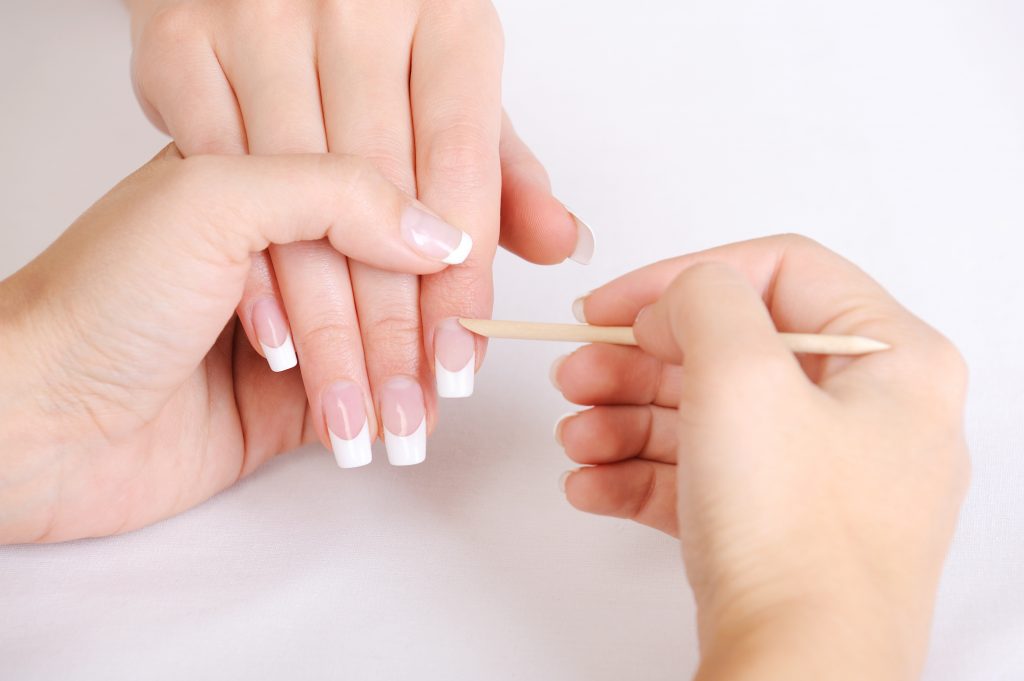Calloused skin around fingernails is a common problem for people who suffer from dry skin. Calloused skin around fingernails can lead to health problems such as infection and skin tears. It can also cause pain, irritation, and damage to fingernails. However, a callus around fingernails isn’t dangerous for health yet becomes a significant irritation source when they’re painful or when you don’t fancy their appearance.
This problem usually occurs on fingers, palms, feet soles, and toes. Thus, in case you have calloused skin on your fingernails, you have the option to get rid of it and prevent it from occurring in the future. So, let’s go through the various causes, treatments, and prevention techniques for Calloused fingernails.

Contents
Causes of Calloused Skin Around Fingernails
A calloused skin around fingernails may develop because of continuous movements, which create friction over the skin. In due course, the dead skin sets, thereby hardening above the new skin cells like a shield for protecting the skin below the callus. Below are a few general reasons behind the formation of calluses around fingernails:
1. Gym hands:
A callus around your fingernail might come up because of lifting or gripping weights without using gloves, and this is referred to as gym hands. You’ll locate extra skin under nails or usually around fingernails or on the skin ridge of the palm, right below the fingers. Here the friction is maximum because of continuous weight gripping.
2. Writer’s callus:
The Writer’s bump is often referred to as Writer’s callus. It occurs between two fingers around the nails where you grip a pencil or pen. This commonly appears between the ring and middle finger.
3. Playing the Guitar:
Playing Guitar can cause thickening of the skin around fingernails, mainly on the finger’s top pads, when you practice very frequently. Moreover, a callus may generally add to successful guitar playing.
4. Labour-intensive task:
Physical work may often develop calluses in various hand parts. The palm’s grip and finger’s lower pads can have calluses because of lifting boxes, hammer swinging, woodworking, and several labor-intensive jobs.
You May Like: Cute Summer Nail Art Ideas
Causes of Dry Cuticles on Fingers
Some common reasons behind dry cuticles and skin around nails comprise:
- Cold weather
- Washing hands frequently
- Not moisturizing your skin enough
- Using nail polish remover or hand sanitizer
- Malnutrition
- Cuticle-biting or nail-biting
- Eczema
- Certain medications
Even though a maximum of the reasons mentioned above aren’t much concerning, it is advisable to visit a doctor when the eczema is the reason behind your cuticles drying out. Only a professional can aid you in getting rid of this issue by recommending medications or other techniques if necessary.
Repairing Cuticles and Calloused Skin Around Fingernails
Following are some ways to improve hard calloused skin around fingernails:
1. Put on moisture-retaining gloves:
It is advisable to wear cotton gloves overnight. These gloves lock in moisture, thereby healing cuticles and nails. You may remove the gloves after you get up in the morning. Moreover, you may cover your fingers with paraffin wax or petroleum jelly for enhancing moisturizer absorption as it retains moisture. Next to this, you may put on gloves when you go off to sleep or sit idle.
For long-lasting and better outcomes, you can repeat this process every night.
2. Push off the cuticles:
You may utilize an orange stick (a flat and a pointed end manicure stick) or a wood cuticle pusher to avert your cuticles from developing near your fingernails. You’ve to use the orange stick’s flatter end to pull back the cuticle while the pointed end runs across the fingernail’s base, thereby eliminating all gathered dirt.
It is advisable to sterilize the plastic or metal cuticle pusher after and before each use and throw away the wooden sticks; otherwise, they might bear bacteria.
3. Trim the additional skin surrounding the nails:
You may trim the additional skin around the nails with manicure scissors or manicure nippers. This comprises the skin closer to the cuticle, which you push back using manicure sticks. However, keep in mind that you’ve to cut away the translucent, soft, and loose skin only and not the natural cuticles. Thus, you’ll have to remove the dead skin around the nails which developed there and now have become loose.
It is advisable not to remove the skin protecting or surrounding the nail, i.e., the upper cuticle. This is because the extra skin under the nails is white-colored compared to the rest of the finger skin. Thus, getting rid of the skin causes skin tears and difficulties.
4. Immerse your hands and dry them:
You’ve to take a medium-sized bowl filled with warm water, four inches deep. Now Dip your hands into the water, and also ensure submerging your cuticles and nails. Continue soaking for around five minutes as warm water aids in softening the skin surrounding the nails for pain-free and effortless grooming.
After soaking, dab dry your fingers and hand with a soft towel. Keeping the skin near your fingernails and cuticles water-free yet moist is vital. When you keep your skin smooth and moist while manicuring the cuticles, it becomes less painful and easier to eliminate dead skin cells.
5. Apply a gentle moisturizer:
You can apply store purchase moisturizers, Moisturizing oils, or lotions specially formulated for cuticles. This shall moisturize and nourish all those dry areas and hard pieces of skin on side of the nail. Put on an adequate moisturizer quantity around the nails and take special care towards the cuticles. Keep in mind to cover up the entire area around the fingernails with moisturizer. You may even try reaching out to the moisturizer underside the nails. Moreover, it is crucial to buy Fragrance-free and alcohol-free moisturizers as they offer better hydration.
See Also: Different Types of Nail Shape for Fat Fingers
Treating Calloused Skin Around Fingernails
Most Calloused skin around fingernails isn’t permanent, which you may recover at home. A callus goes away after you stop performing those activities, which is the reason behind its development. In a few instances, guitar calluses and workers’ calluses penetrate deep in the skin layers and might not disappear entirely.
Moreover, remember that no treatment can eliminate the callus if you continue performing the activity for which the callus came up.
1. Skin-softening creams:
How do soften the skin around nails? You can use skin-softening creams for treating and preventing calluses. You may use it over your callus each morning and every night as it aids in encouraging a thriving skin turnover, gradually eliminating the callus.
2. Pumice Stone:
You may utilize pumice stone for exfoliating that spot with callus, uplifting cell turnover. This is a light exfoliator that removes dead cells while promoting circulation. However, you can use the pumice stone over the finger with calluses only when the skin is moist and work in circular motions for optimum results.
3. Baking soda:
You may prepare a paste using baking soda for skin exfoliation while revitalizing new cell formation. You’ve to blend an equal amount of water and baking soda, thereby applying this paste to the callus. You’ll find that the hardened skin around your nails starts softening. Ensure to wash away the applied paste entirely, plus moisturize the skin after that.
4. Epsom salt:
Epsom salt is a fantastic method to treat calloused skin. You must regularly soak the calloused skin in Epsom salt for a significant outcome. This easily accessible and cheap ingredient discharges magnesium sulfate after dissolving it in water. The combination of magnesium sulfate and warm water soak dissolves dead skin more rapidly than it’d if not.
5. Exfoliating Cream:
Exfoliator creams do wonders to abandon dead skin around nails, gradually removing the callus. However, it is advisable not to go for aggressive exfoliating creams; instead, buy natural components like finely powdered apricot pits or black walnut. These feel light on delicate skin.
6. Other alternatives:
You may use commonly available and utilized over-the-counter products containing urea. The same goes for ammonium lactate as well, an Obtainable over-the-counter alternative.
See Also: how to relieve pain from acrylic nails
Calloused Skin Around Fingernails Prevention
Following are some important ways to prevent a callus around the fingernail:
1. Avert drying agents:
A dry hand is vulnerable to peeling and cracking, thus protecting the hands from unwanted exhibitions to activities that might remove moisture from your writing. So avoids things such as:
- It is advisable to wear gloves during winter. This is because the dry and cold air in these chilling months usually draws out the skin’s moisture. Hence wear gloves for protecting your hands in such times.
- It is advisable to get rid of nail polish removers containing Acetone as their base. Acetone eliminates the essential natural oils and moisture from nails and skin.
- It is better not to wash dishes in hot water without wearing gloves. This is because the soap and hot water suck up the total hand moisture. So, to avoid this, you may wear gloves while dishwashing for protecting your hands and nails. Also, after you complete this work, ensure to pat dry your hands.
2. Keep the hands away from the mouth:
Try holding back nibbling or nail-biting on the loose skin pieces surrounding the nails. A human mouth has many bacteria that can cause infection when you bite the nails very low or cut the skin near the nails. In addition, you may apply a distinct foul-tasting ointment for stopping yourself from putting your fingers near or inside your mouth.
3. Filing nails:
Maintain ideal-length nails to avert them from being snagged or caught on things. It is crucial to pay more attention to the nail corners and maintain their smoothness such that their edges won’t cause skin injury around the nails, thereby developing hard skin around the nails. While filing nails, draw the file over the nail in a steady direction as this aids in preventing nail tears and splits caused by sawing.
4. Moisturize frequently:
Regular moisturization is a must for hydrated and smoother skin around the nails several times every day. Everyone wants their nails and cuticles to stay nourished because breaks, rips, and hangnails occur when cuticles and nails get dry. Also, it is crucial to keep your fingers moisturized during winter to prevent the hard pieces of skin on side of the nail.
5. Keep away from picking skin:
Instead of picking hardened skin around nails, moisturize and soak your hands. Picking might cause open cuts, thereby breeding infections. In addition, few individuals do skin picking out of nervousness or habit. However, with self-control, you may curb these issues.
6. Eat a balanced and healthy diet:
If you have a nutrient-deficient body, your nails, hair, and skin will begin suffering. So, it is vital to have enough fruits, vegetables, and lean proteins. Also, ensure eating healthy fats so that the body absorbs proper nutrients. You may even consume vitamin supplements for supporting healthy nails. Nevertheless, it is always to consult a doctor before going for these supplements.
7. Stay hydrated:
It is recommended to regularly have at least eight glasses of water or other fluids. With proper hydration, you’ll maintain moist and soft skin cuticles and skin. Water is the best way to prevent the thickening of the skin around fingernails. You may even include flavors like cucumber slices, lime, lemon, or orange in the water. Alternatively, you may have coffee or tea as alternative hydrating fluids. Consume water-based items like watery fruits and soup as it enhances hydration. Moreover, it is crucial to boost fluid consumption when you have a lot of sweat.
FAQs
Q. Why does a callus occur?
Ans. Callus develops after continuous irritation, pressure, rubbing, or friction over the skin. With little care and attention, you can prevent hard skin around your nails.
Q. Why there are dry cuticles and skin around nails?
Ans. Cuticles often get vulnerable to excess soapy or salty or chlorine water, sun, and cold, and as a result, the skin turns dry, cracked, and chapped.
Q. How does a callus appear?
Ans. Calloused skin is pale or yellowish and feels lumpy when touched. However, as the affected area is thick, it might be less delicate to touch the skin near it. You can even have broader and bigger calluses with less-established edges.
Q. What is the best way to remove calluses?
Ans. Pumice stones are the most conventional callus removers to date and are the best method over any other.
Wrapping Up
Hard calloused skin around fingernails can come up because of various activities which aren’t usually permanent or painful. You may try different home remedies to soften the skin, moisturize hands, and exfoliate the damaged area, as this primarily works for the gradual elimination of callus. If you’re facing irritating or painful calluses and you can’t prevent them with home remedies, it is recommended to visit a dermatologist regarding other treatment methods.
You May Also Like:


